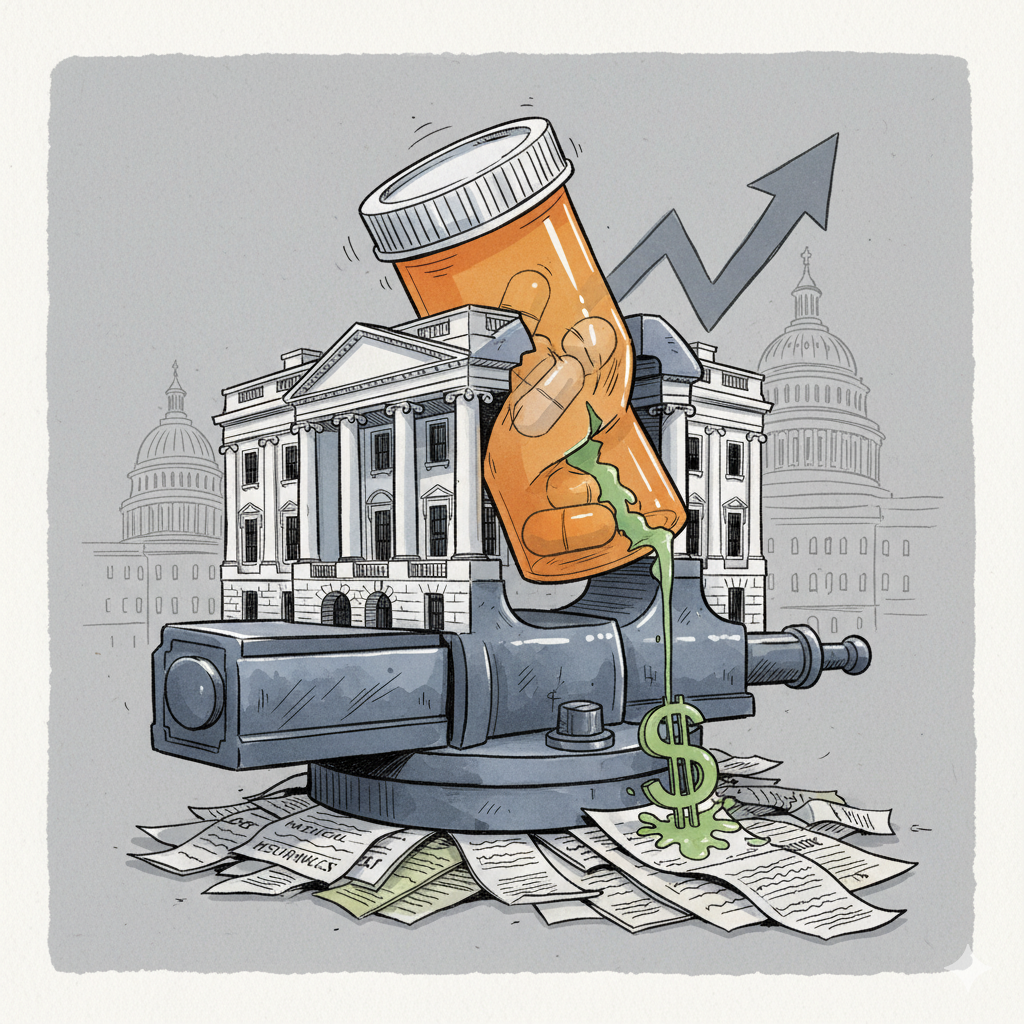The Trump-AstraZeneca Tariff Showdown and the Birth of Direct-to-Consumer Discounts

The Trump-AstraZeneca Tariff Showdown and the Birth of Direct-to-Consumer Discounts


1. Executive Summary: A Strategic Compact of Political Imperative and Commercial Pragmatism
On October 10, 2025, the Trump administration and AstraZeneca PLC announced a landmark agreement.¹ The deal aims to lower prescription drug prices for American consumers.²
This is the second agreement of its kind, following a similar pact with Pfizer Inc. in September 2025.³ It is a direct result of the administration’s aggressive “Most Favored Nation” (MFN) policy. This policy seeks to align U.S. drug prices with the lowest prices that other developed nations pay.⁴
The agreement is not a simple price reduction. It is a complex strategic maneuver, born from a convergence of political needs and commercial pragmatism.
For the Trump administration, the deal represents a tangible, high-profile victory in its war on high drug prices—a key issue for the American electorate.² For AstraZeneca, it is a calculated measure to mitigate significant risk. The company faced a credible threat from the administration of tariffs up to 100% on imported pharmaceuticals.⁵
The deal’s structure is dual-pronged. Each prong is designed to achieve distinct political and policy objectives.
The central thesis of this analysis is that the agreement’s direct impact on drug affordability for most Americans will be minimal. This includes those covered by commercial insurance or Medicare. While the deal is a significant political achievement for the Trump administration and a shrewd strategy for AstraZeneca, its tangible benefits are limited.
Multiple independent healthcare economists and policy experts support this conclusion. They note that the deal’s primary financial impact is contained within the Medicaid program. This program already benefits from substantial statutory discounts.⁸
Therefore, the deal’s true significance is not a fundamental reordering of U.S. drug pricing. Instead, it establishes a powerful new coercive framework. In this framework, the administration weaponizes trade policy to achieve healthcare policy objectives. This sets a potent precedent for all future government-industry negotiations.